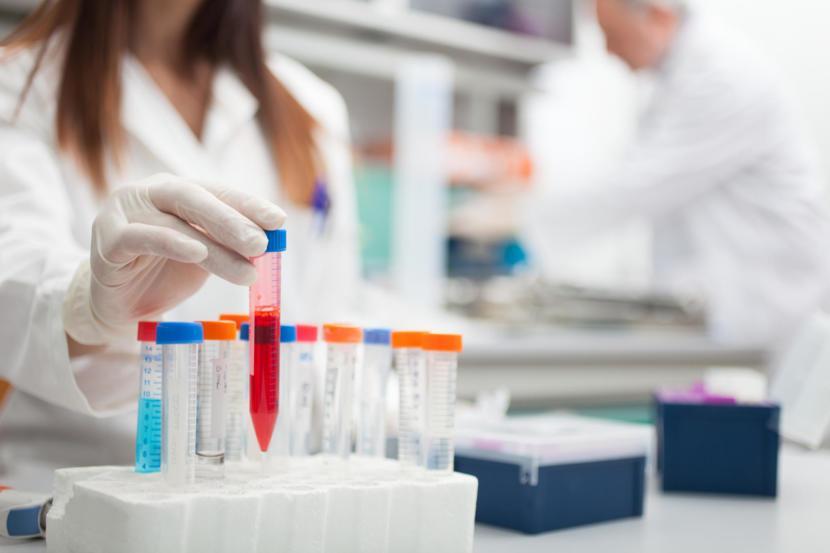Research Gives Muscular Dystrophy Patients New Hope
Research for new treatments is constantly being done for muscular dystrophy. Learn more about what researchers are learning.

Regardless of the person’s age, sex, or where they are from, being told that they have a progressive disease like muscular dystrophy is devastating. It means learning to live with a disease that makes muscles waste away. For many, one of the coping mechanisms they turn to is to learn as much as they can about the disease and how it affects the body, mind, and life in general.
Thankfully, learning about MD can be easily done. Doctors, researchers, and scientists have been studying the disease for more than 180 years. With every new discovery, patients' lives are improved and hope grows that one day a cure will be discovered.
MD, an early history
- 1830: The historical account of MD was recorded by Sir Charles Bell. He wrote an essay about a mysterious illness that caused young boys to suffer from weakening muscles
- 1836: Another scientist wrote about two young brothers who developed progressive muscular weaknesses. At the time, the cause was thought to be tuberculosis
- The 1850s: More accounts of boys losing muscles, their ability to walk and eventually succumbing to some disease, began to appear in medical journals
- The 1860s: Dr. Guillaume Duchenne, a French neurologist wrote the first complete and comprehensive paper on a disease that affected muscles in boys. Eventually, a form of MD, Duchenne Muscular Dystrophy (DMD), was named after him.
After Dr. Duchenne’s account was released and the subsequent research that was done, it was discovered that the disease had more than one form that didn’t only affect boys. They found that muscular dystrophy could strike people of all ages and of either sex.
What we know about MD
The complexities of MD have been baffling doctors for years - and yes, MD is complex. Research has helped uncover a few facts that continue to help uncover more and more about the disease. Some of these facts are:
- We use muscular dystrophy or MD to refer to a group of at least 30 different genetic diseases, including:
- Duchenne MD, the most common form of childhood MD
- Becker MD, a less severe form that appears in older children
- Congenital MD refers to the disease that presents itself at birth or before the age of 2
- Distal MD affects the muscles farthest away from the shoulders and hips
- Emery-Dreifuss MD typically affects boys.
- Facioscapulohumeral MD targets the muscles of the face, shoulders and upper arms
- Limb-girdle MD is marked by more than 20 different conditions
- Myotonic dystrophy (DM1) causes the patients to have the inability to relax their muscles after a contraction
- Oculopharyngeal MD targets patients in their 40’s and is most common in families of French-Canadian and Hispanic descent.
- Regardless of what kind of MD the patient has, they will suffer from some form of progressive muscular weaknesses
- Some forms of MD also affect the heart, eyes, brains, lungs, and spine
- MD varies significantly from patient to patient, with some suffering from a severe case that leaves them unable to walk or take care of themselves, to others who continue to live a relatively normal life
- The disease is not contagious, it cannot develop after injury or strenuous activity. However, it is most definitely genetic
- While some countries report higher numbers of MD, it affects patients worldwide.
- 1 in every 3,500 births in the U.S. is affected by the disease
- While most cases of MD has a family history of the disease, Duchenne cases often appear out of nowhere
What does MD research look like today?
Medical research has come a long way since the 1800s. Organizations, such as the National Institute of Neurological Disorders and Stroke (NINDS), are key to ensuring that research continues. Thanks to an amazing amount of support from organizations like NINDS, studies are constantly being drawn to help everyone get a better understanding of MD, its causes and new ways to treat it.
The first step is making sure that researchers have a clear understanding of each type of MD. The second is to clearly understand genes. At the moment, it’s impossible to identify all the different genes that cause muscular dystrophy. Certain advances have allowed scientists to identify gene sequencing that may be involved in the different forms of MD.
Research goes beyond trying to figure out what exactly causes the disease; it also involves the expertise of biotechnology and pharmaceutical firms to help uncover treatment and therapy options for patients with MD.
Thanks to Federal funding, philanthropic support and various agency partnerships, a variety of strategies have been used to develop new drug and biological therapies. While some may be specific to a form of MD, others are designed to be more general in scope.
- Gene replacement therapy: This is, as its name implies, the replacement of ‘bad’ genes with ‘good ones. There is still a long way to go on research and many things to consider. However, great strides have been made to make the theory of preventing MD and perhaps even other congenital defects.
- Genetic modification therapy to bypass inherited mutations: This therapy focuses primarily on Duchenne muscular dystrophy. Manipulation is used to skip the genetic mutation that can lead to DMD.
- Drug-based therapies: This is designed to promote healthy muscle growth and prevent damage that occurs as the muscles get weaker with the disease. Slowing muscle degeneration can have a positive impact on life and increase a patient’s lifespan.
- Cell-based therapy: This is where researchers explore whether or not missing proteins that are often tied to MD, can be replaced and as a result, protect new muscle cells.
The next steps in muscular dystrophy research
The biggest hurdle that any form of research faces is funding. Research, clinical trials and the creation of new drugs and therapies are a big business and cost big bucks. With the huge leaps that research is making towards finding ways to help those with the disease, it’s important not to lose momentum.
Everything from training, career development, and research will have a positive impact. NINDS has committed to focused research, development and clinical trials on a translational level. These are two samples of the strategies and tactics that can be utilized by organizations everywhere to allow more promising treatment options to emerge.
Advocating for more studies
The Muscular Dystrophy Community Assistance, Research, and Education Amendments Act was signed in 2001. It was reauthorized in 2008, reigniting the federal government’s commitments to MD patients. A committee of physicians, scientists, subject matter experts, consultants, and voluntary health organizations work hard to make sure that the research towards treating and eventually eliminating MD. While these committees are critical to ensuring that research continues, it’s also very important that patients and their families commit to the cause as well. Advocates make a huge difference in keeping the government and the general public aware and educated about the disease and the progress that is being made.















